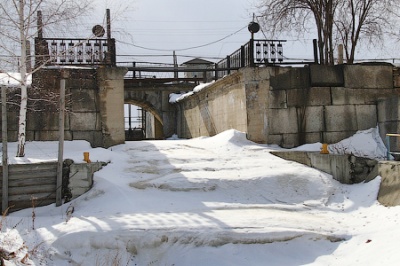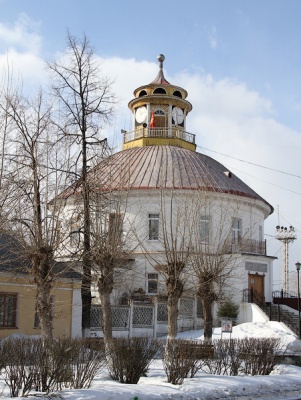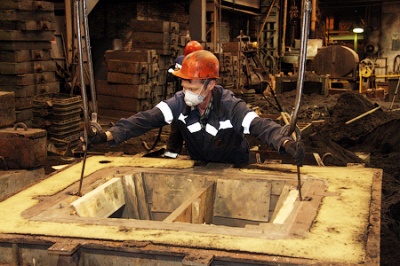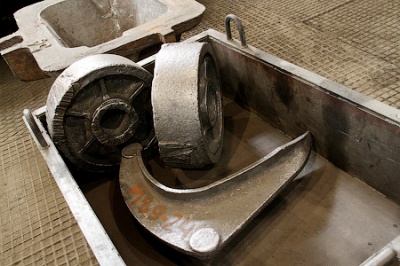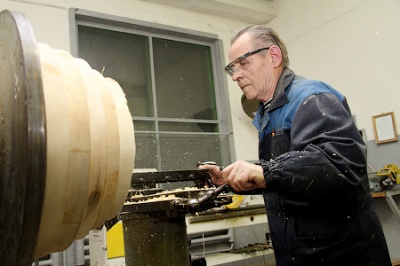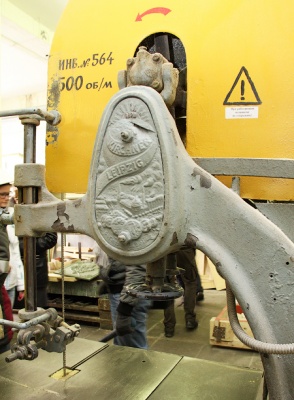 |
Home page / News & Analysis
/ Latest news
/ A quarter millennium of quality - from the time of the Demidovs to today
|
|
|
A quarter millennium of quality - from the time of the Demidovs to today
10.04.2012 — Analysis At the beginning of April, 2012, the Verkh-Neyvinsk plant celebrated its 250th birthday. This is one of the oldest metallurgical factories east of the Ural Mountains. The plant is still uses its original, 19th-century buildings and structures, as well as some of the equipment that dates from that time. This correspondent for RusBusinessNews visited the company (now an affiliate of Uralelectromed, OJSC, which is itself part of the Ural Mining and Metallurgical Company) during its anniversary celebrations. On April 3, 1762, the Berg College in St. Petersburg gave Prokofy Demidov permission to build a factory "at a place discovered by him on the Neyva River at the Pristalova Cape". The first structure for this industrial complex was one of the biggest dams in the Urals and almost a kilometer long! The Verkh-Neyvinsk reservoir formed by this dam powered all the machinery at the plant. The dam was constructed using the standard technology of the 17th century - inside the earth and clay embankment is a spacious frame made of larch wood. The water descends through arched grooves that were constructed of enormous hewn stones fitted together without the use of mortar. The dam was completed in 1767 and for 245 years has needed no major repairs or renovations. A recent study showed that this hydraulic structure will still be standing for several more centuries. The only changes made to the dam have been that the large waterwheels are no longer found in the arched grooves.
Although the dam is notable for its length, it is the building that houses the factory office (and which is currently home to the administration of the village of Verkh-Neyvinsk) that is legendary. The story is that when Prokofy Demidov came to inspect the construction site, he was shown several designs for the factory headquarters, but he liked none of them. Picking up a carafe from which he poured Italian wine, the famous manufacturer demanded that a building be constructed of similar form. The round office building is crowned with a "cork" - a small tower with a circular balcony. This tower holds a clock with four faces. The tower was struck by lightening shortly before World War II, and the clock stopped. There have been many attempts over the past 50 years to bring it back to life, but none were successful until the plant's 245's anniversary. The ravages of time had almost completely destroyed the faces of the clock and so replacements had to be made, but the old clock hands, built during Demidov's era, were able to be salvaged.
The main facility at the Verkh-Neyvinsk factory is a plant that manufactures cast iron and steel, located 75 kilometers north of Ekaterinburg. Originally that plant housed a blast furnace and hammer factory, which manufactured cast and bloomery iron. At its founding, the company focused on processing local ore. To this day, one can find the nearby holes that are the remnants of old mineshafts. But most of the metal had been mined by the end of the 19th century, and in 1912 the production of iron and steel ceased. Since 1941, the factory has specialized in the processing of waste that contains non-ferrous metals. During WWII, brass and bullet lead were smelted here to produce munitions. Today the Verkh-Neyvinsk factory belongs to the Ural Mining and Metallurgical Company (UMMC) - Russia's largest copper producer. The company has retained its foundry operations as it develops its secondary production of non-ferrous metals. The cast iron and steel plant's main products are casting molds (baths), into which the blister copper is poured at UMMC's facilities. Modern plants that produce large-batch castings use metal mold casting technology that involves a reusable steel form. But in Verkh-Neyvinsk they use techniques that have changed little since the 17th century. A wooden "model" - a prototype of the finished product - is placed inside a floorless box (a mold box). Earth is packed firmly into this mold box and when the model is removed that empty space is filled with molten metal. Further casting is done by machine. All the work, including the preparation of the models, is done by hand.
With this type of manufacturing the level of labor productivity is similar to that of a century ago, but with the proper approach, this technique can still be competitive. Good quality casting molds can be produced this way at little cost - a mold made of earth is much cheaper than one made of metal. Even though steel forms are reusable (and they can still only produce a limited number of castings), the old technique is still quite economical. And although the quality of a casting from a metal mold is superior to one made from an earthen form, casting molds simply do not require such a high level of quality.
The company's director, Dmitry Tropnikov, told RusBusinessNews that the iron and steel plant has been operating at 125% capacity in recent years. With a high degree of manual labor and no mass production, the facility is able to manufacture small batches of custom castings or even accept orders for individual pieces. The most difficult part is creating the model of the part that is to be cast. Singular craftsmen are still employed at the Verkh-Neyvinsk factory - model makers who are able to construct a wooden prototype of any part.
Nikolai Panov is a 75-year-old model maker who has been working at the plant for 59 years, almost exclusively in the modeling unit. This veteran's favorite tool is also an heirloom. To make his models, Nikolai Panov uses a band saw made in Leipzig in 1877. It was originally powered by horses, but has been adapted for electricity. But it can't be compared to the smooth operation and ease of use of modern equipment...
Prokofy Demidov was the eldest son of the biggest foundry owner in the Urals, Akinfy Demidov. One of the most memorable attractions for tourists visiting the Sverdlovsk region is the leaning tower of Nevyansk, which was constructed at the order of the founder of the Demidov dynasty. But it's harder to get into the factory/museum in Verkh-Neyvinsk than that other tower in Pisa. In a way, one might envy the business partners of the Ural Mining and Metallurgical Company. Seeing a manufacturing business that has been operating for a quarter of a millenium is a priceless experience! Andrey Gubanov |
| Regions | Project participants | Investment projects | Consulates and Trade Offices | News and Analysis | About the Project |
|
© RusBusinessNews, 2009. All rights reserved. Establishing a hyperlink to RIA RusBusinessNews is required for using any of the material published on this website. News and analytical reviews are translated into foreign languages by the TRANSLIT Translation Agency |
«Sum of technologies»® Web design Site promotion |
